|
Wisley's Alpine Log
By Paul Cumbleton
Log 7 27th March 2008
Hepatica! - part 2
Part of our event included the production of a leaflet giving cultivation information. This was written by Lucie who actually grows the hepaticas here and was done in her own inimitable style, writing just as she speaks.
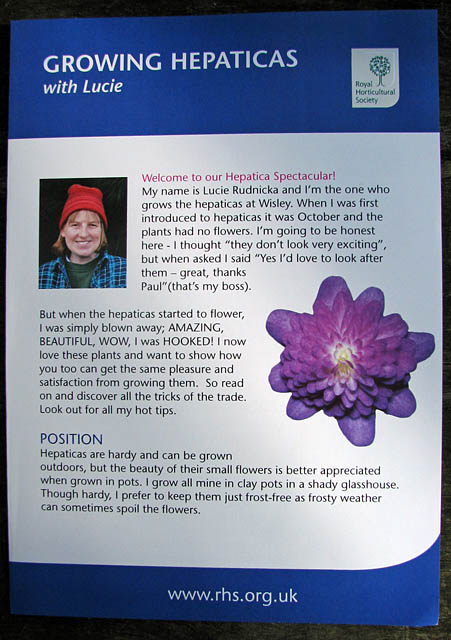
Lucie's cultivation leaflet
Here is all Lucie's text from the leaflet, which should help anyone starting with hepaticas to know their basic requirements when growing in pots: I will break the text up a bit with some more photos of the plants we had on display at our event:
Welcome to our Hepatica Spectacular! My name is Lucie Rudnicka and I'm the one who grows the Hepaticas at Wisley. When I was first introduced to Hepaticas it was October and the plants had no flowers. I'm going to be honest here - I thought they don't look very exciting, but when asked I said "Yes I'd love to look after them - great, thanks Paul (that's my boss)"
But when the Hepaticas started to flower, I was simply blown away; AMAZING, BEAUTIFUL, WOWZERS I was HOOKED! I now love these plants and want to show how you too can get the same pleasure and satisfaction from growing them. So read on and discover all the tricks of the trade. Look out for all my hot tips.
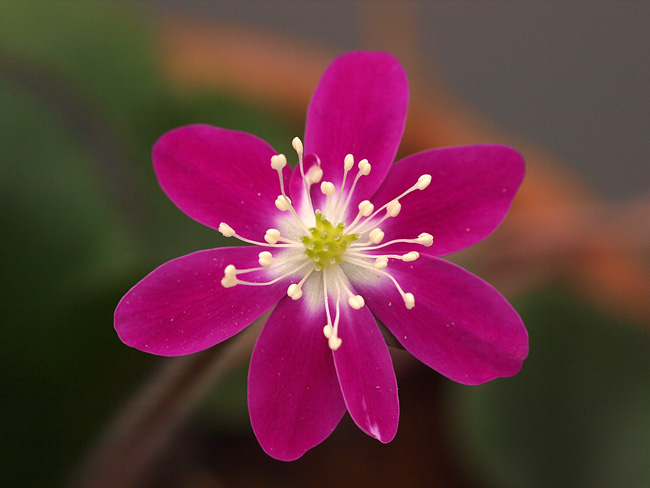
Hepatica 'Hyoujunka'
POSITION
Hepaticas are hardy and can be grown outdoors, but the beauty of their small flowers is better appreciated when grown in pots. I grow all mine in clay pots in a shady glasshouse. Though hardy, I prefer to keep them just frost-free as frosty weather can sometimes spoil the flowers.
COMPOST MIX
I use: 1 part John Innes no.3, 1 part leaf mould, 1 part perlite and 1 part composted bark, (all parts by volume). I add 3g per litre of mix of Vitax Q4 fertiliser and 2g of dolomitic limestone per litre of mix
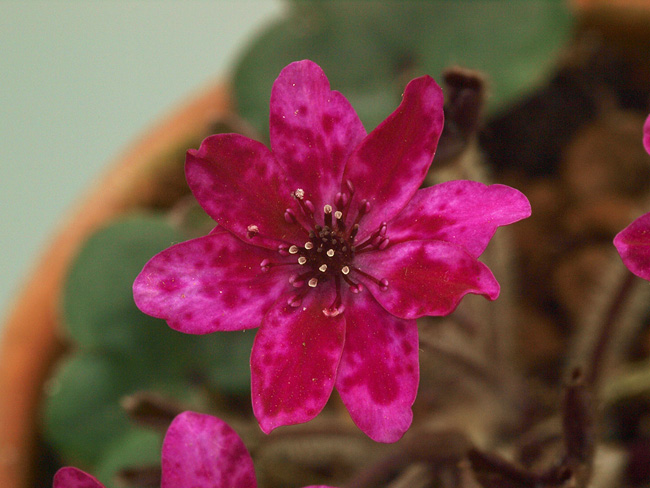
Hepatica 'Benisudare'
REPOTTING
Repot each year just after flowering. This must be done very carefully and remember patience is a virtue - shake off all the old compost and look closely at the roots.
HOT TIP: - Now's the time to remove any damaged roots. Also look for any swollen nodules on the roots and cut these off - these may be a nematode pest. If the roots are madly vigorous they may be cut back by about one third.
Position the crown of the plant high in the pot, and fill to the brim with compost, then gently tap the pot on the bench just to settle it. Label immediately - you can't afford to get names mixed up or misplaced!
Water in afterwards and the job is done.
HOT TIP: - Do not pot too firmly. Don't squash the compost and hold the crown at the right level so that you don't bury it as you fill the pot.
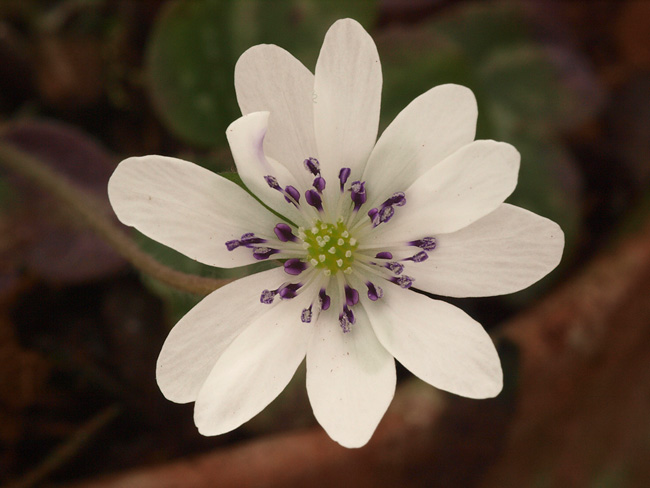
Hepatica 'Hakuji'
WATERING & FEEDING
I always water early in the morning when it's coolest. Liquid feeding can be done in spring and autumn but withheld during summer. I feed with a balanced fertiliser and also give them some liquid seaweed extract feeds.
Water more frequently in early spring, less in summer & autumn, but never allow Hepatica's to dry out completely. During summer I damp down the floor and between the pots to increase humidity.
HOT TIP: - Remember to tell the plants how beautiful they are and say "Please grow well for me"!! My colleagues think I'm a bit mad but I know it works.
SHADING
Hepaticas' natural habitat is very dense woodland, and should be heavily shaded as soon as the flowers have finished. I put shading on the glass and also move the plants under the benches where it is even shadier. In November I take all the shading off again and put the plants back on the bench - winter light encourages better flowering.
HOT TIP:- The plants will tell you when it's time to shade - immediately after flowering, shading on and as the autumn leaves start to fall it is shading off. Keep it simple.
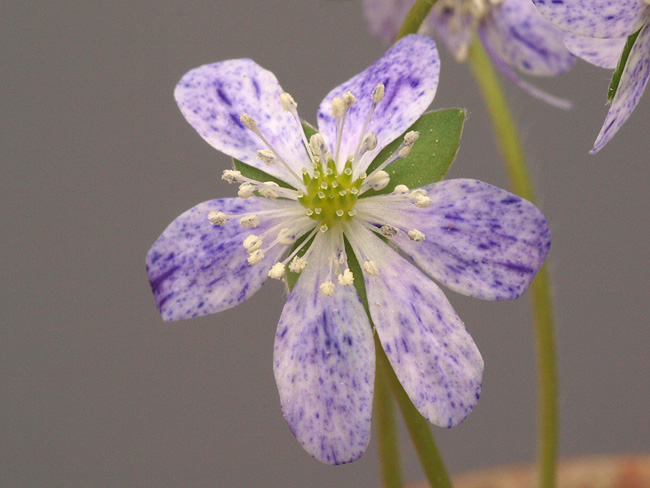
Hepatica - a freckled form
VENTILATION
Hepatica's like to be well ventilated so I have 2 fans blowing air on them constantly
PROPAGATION
Seed does not often come true, so if you want to ensure that offspring are identical to the parent then dividing is the thing to do. Do this while repotting - CAREFULLY teasing plants apart. Each individual crown with roots attached can be potted separately. If you don't mind the variation, growing from seed is fairly easy. Seed must be collected while still green i.e. very fresh or it will not germinate. Sow immediately onto a compost of equal parts of John Innes seed compost, leafmould and perlite. Cover with 0.5cm of grit, water gently in and place in a shady position. Germination will occur the following spring. This may be 10 months after sowing, so patience helps! I leave them to develop during their first summer, and then in late September or early October remove and carefully separate the young plants and pot individually
GOOD HOUSEKEEPING
My favourite, I do like to keep my house in order! So I'm daily looking at my plants and removing the odd fading flower petals, to stop them falling into the crown of the plant as this can cause rotting. I also remove any leaves that look diseased or damaged.
HOT TIP: - When deadheading the hepaticas, be careful not to damage the crown of the plant. Only remove old flower stems when they pull out easily.
You can all enjoy the beauty of this unusual Alpine. I can think of nothing better for early spring when they express pure beauty and charm. Good luck and happy growing!
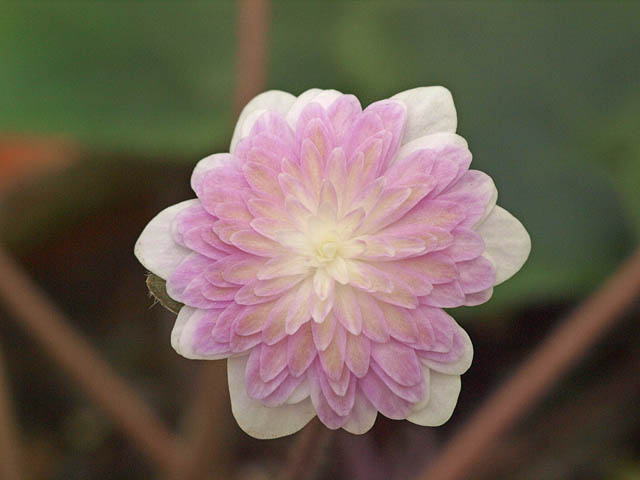
Hepatica 'Yuunagi'
Another aspect of our event was a display of Hepatica-related items. We had A Japanese calendar with lots of Hepatica pictures:
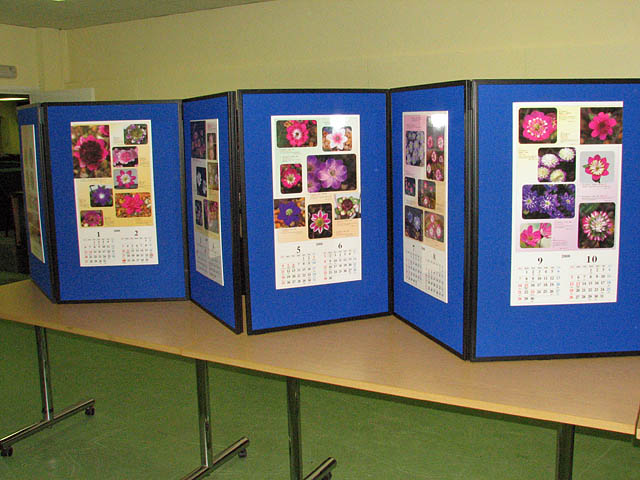
Calendar Exhibit
Also a display of superb photographs taken by one of our speakers, Gunther Kleinhans:
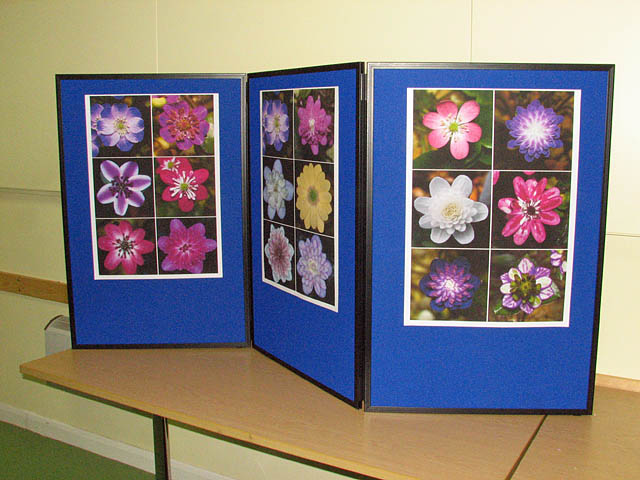
Photo exhibit
Japanese prize plates with hand-painted hepatica motifs and other earthenware comprised another exhibit:
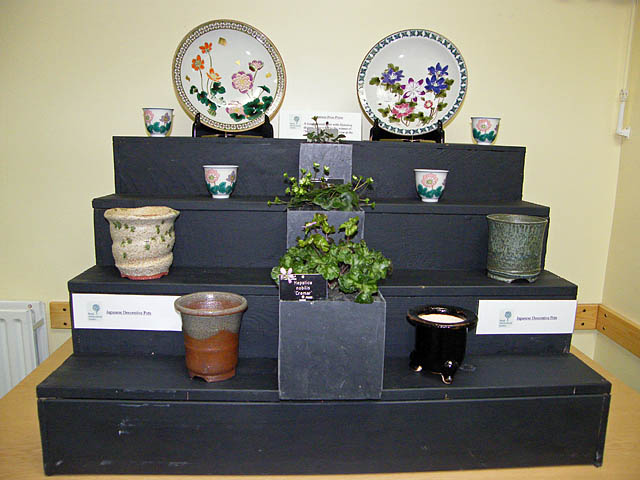
Plates & Pots
One of our volunteers, Helen Fowler, produced some wonderful artwork for us:
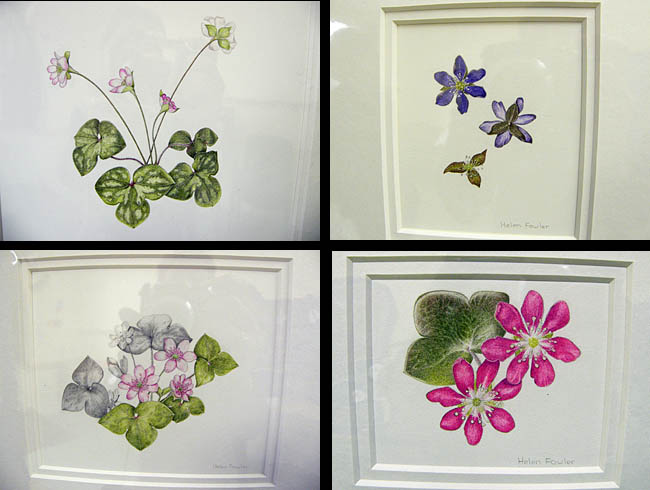
Helen's Artwork
And our own herbarium at Wisley loaned us some of their pressed specimens:
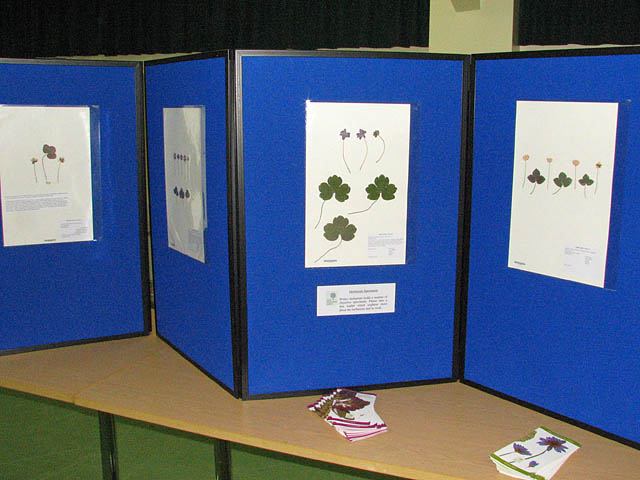
Herbarium exhibit
Finally, a big thank you to all who made this day such a success, and particularly to all of you who attended for coming. A special thanks must of course go to our speakers. Here they are with us in the Display House. Left to right: Myself, John Massey, Lucie Rudnicka and Gunther Kleinhans.
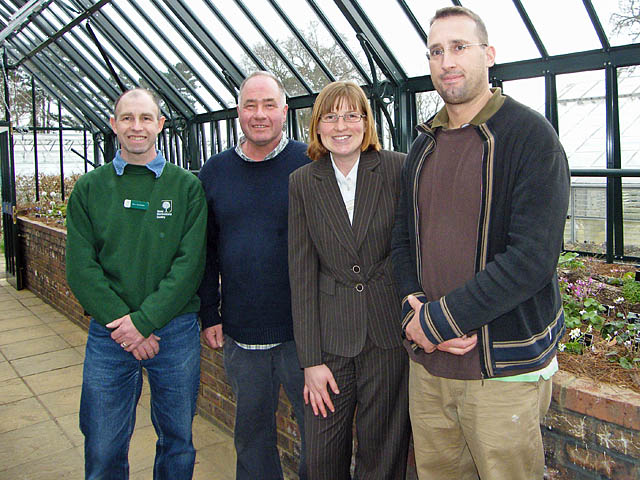
Staff & Speakers
I'll leave you with a few more of the real stars- the flowers. None of these had cultivar names but are beautiful nevertheless:
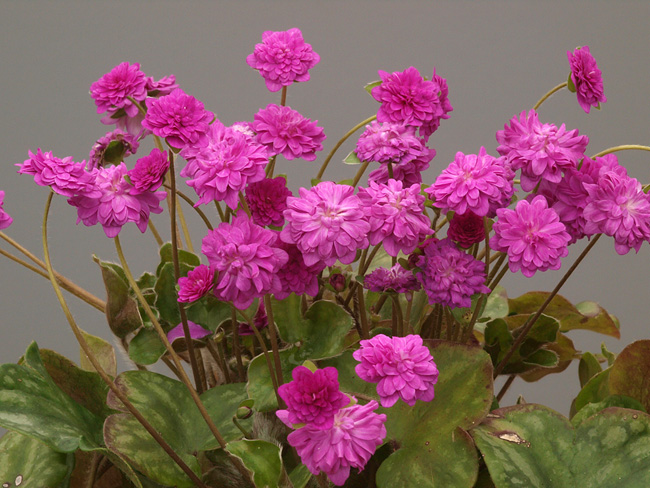
Un-named 1
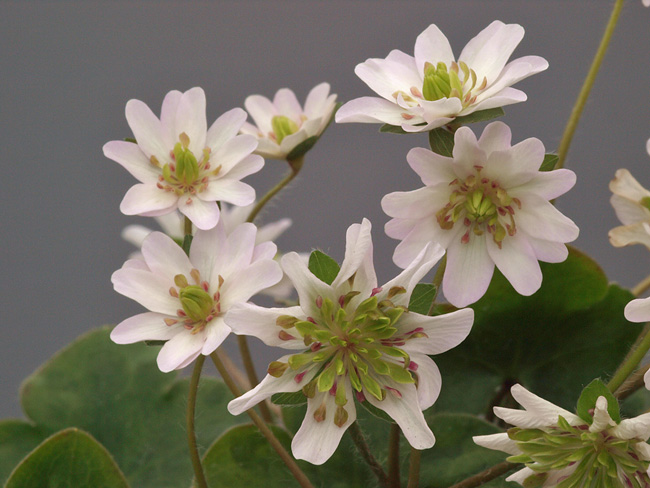
Un-named 2
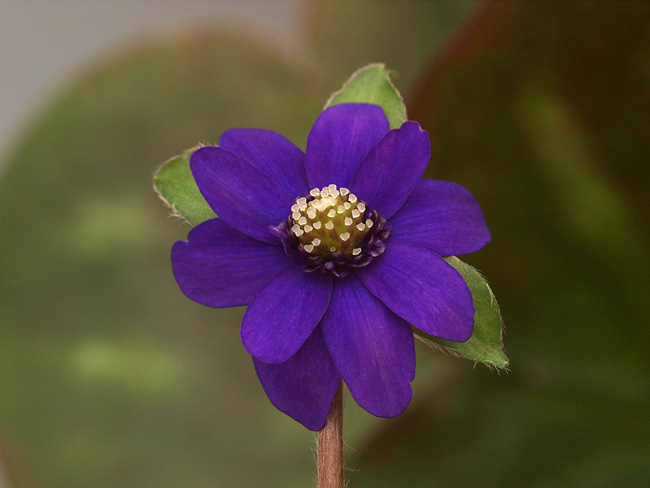
Un-named 3
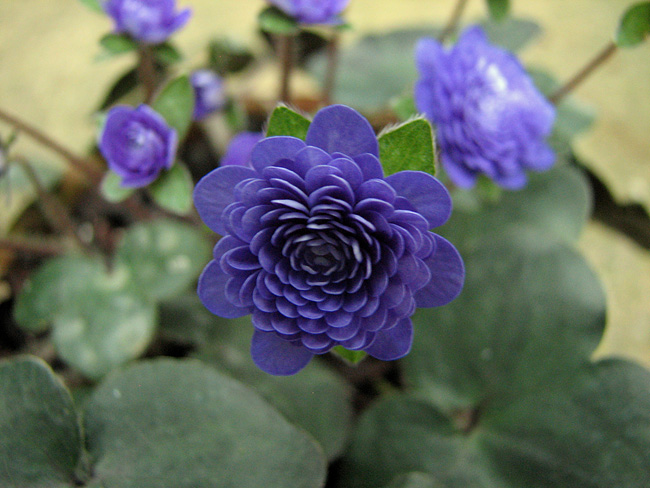
Un-named 4
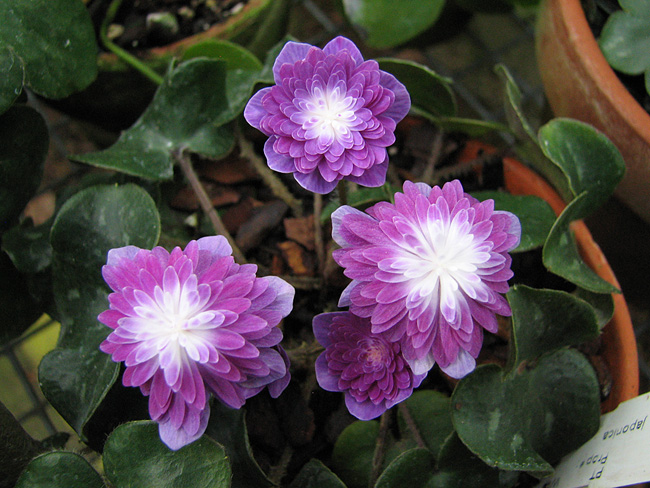
Un-named 5
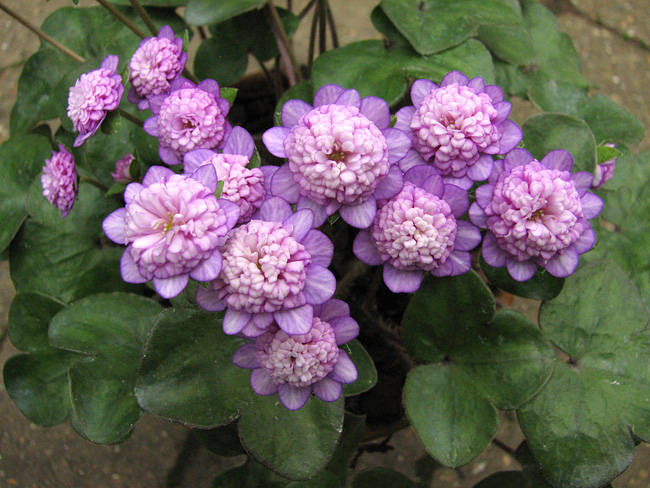
Un-named 6
^ back to the top ^
|

